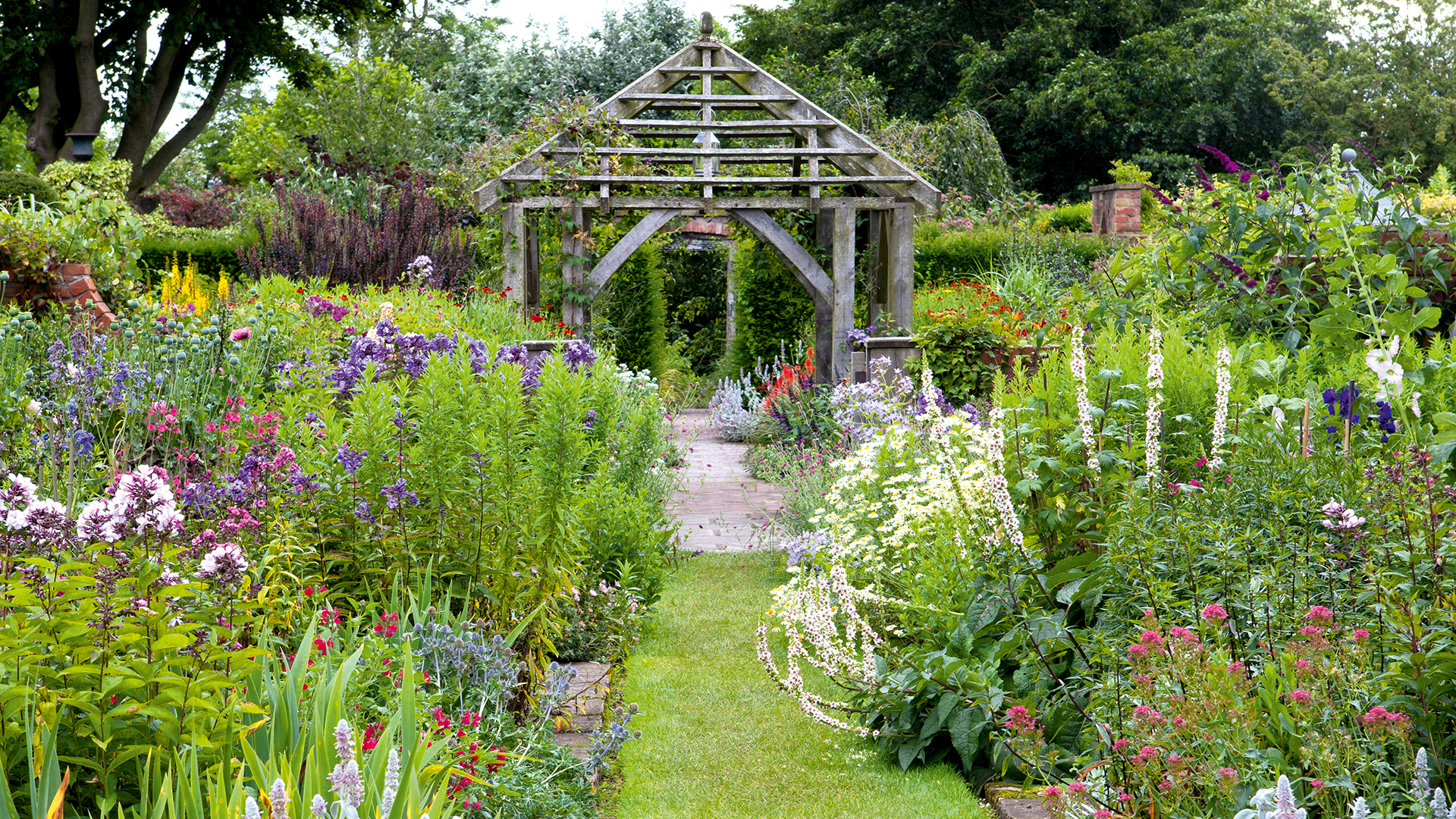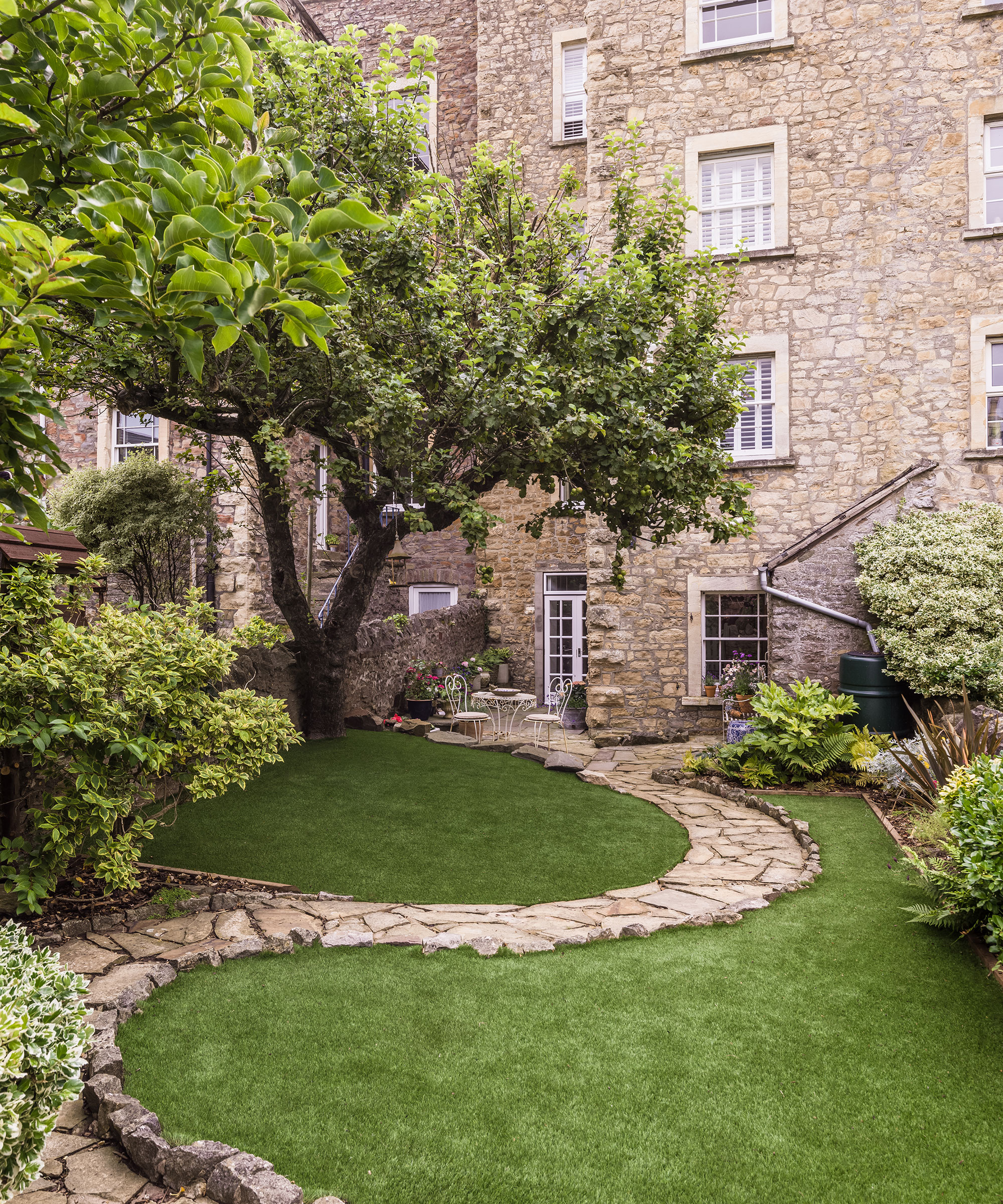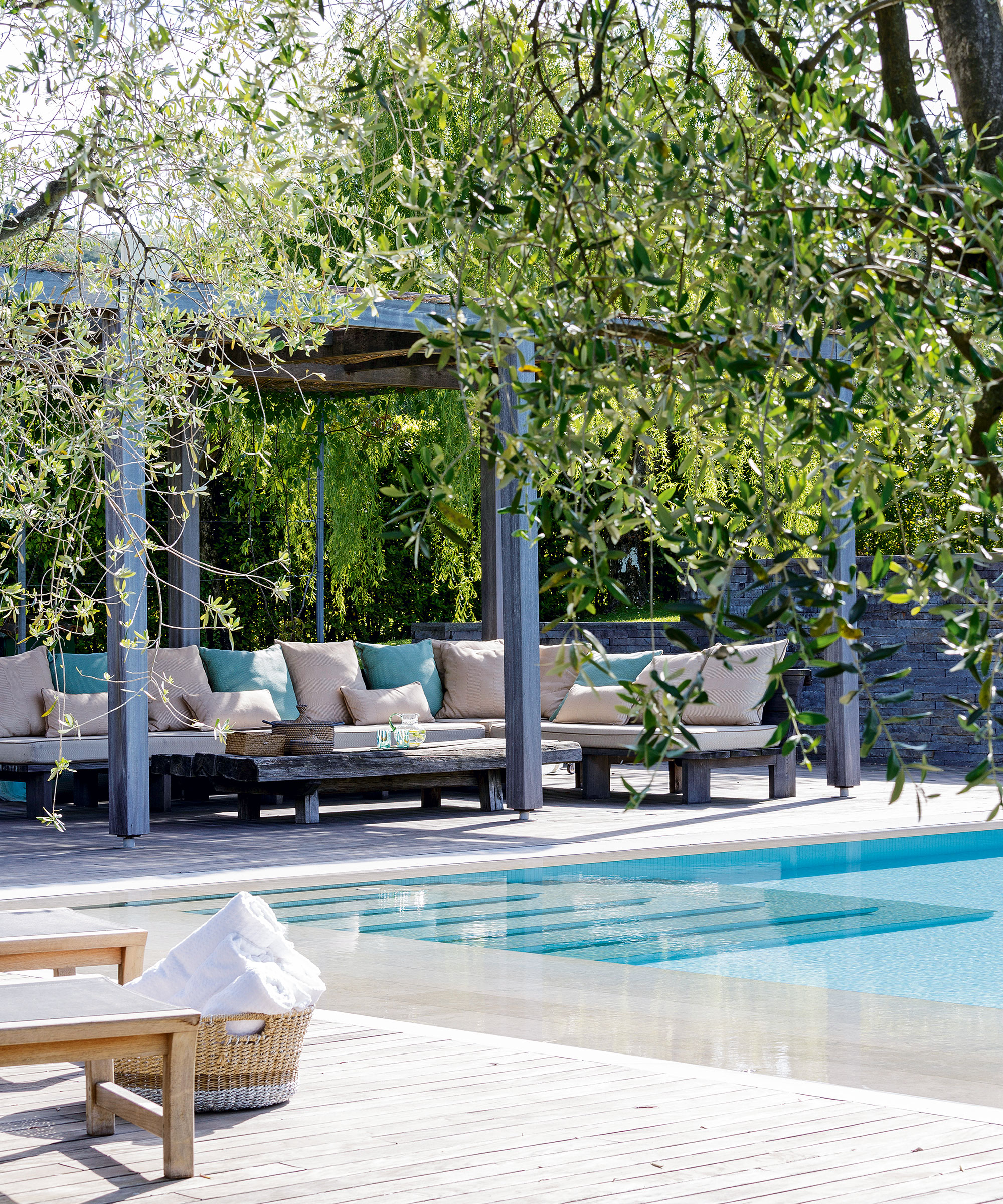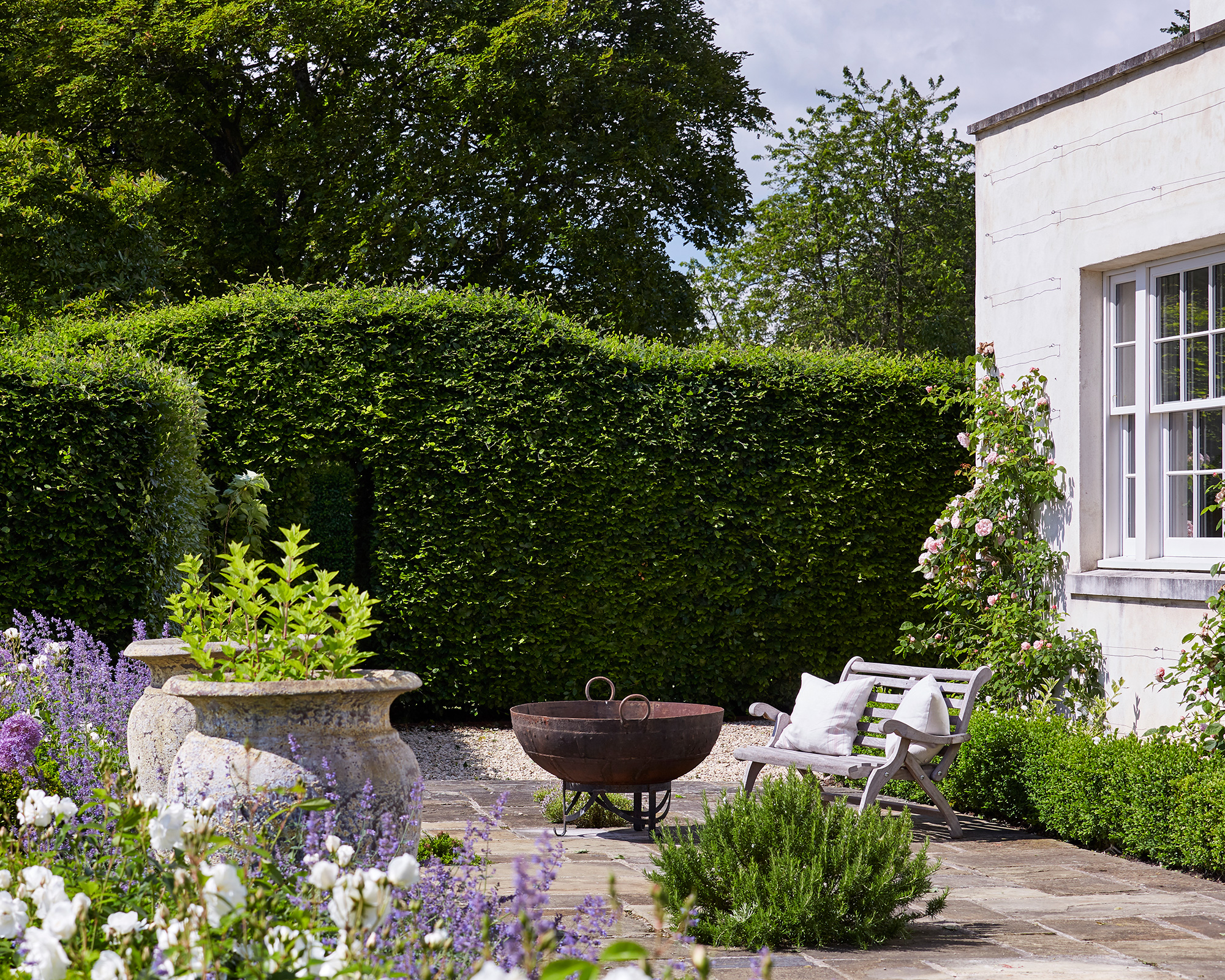How to plan a garden – expert layout and planting advice
If you're wondering how to plan a garden, this expert advice will help you create an outdoor space full of interest and beauty


Wondering how to plan a garden? Creating an outdoor space that complements its surroundings and your home in the way you want it to is an exciting project.
Whether it's a space for activities like dining, relaxing, entertaining and playing, or you want it to include all your favorite flowers and plants, there are plenty of garden ideas to choose from.
But there’s no doubt that planning a garden is a challenge, too. A garden changes through the seasons, and as it matures, so strategizing for year-round interest and for the future is vital, too.
This expert advice offers inspiration for every aspect of designing a plot, from garden decor ideas to planting tips, and more.
How do I start designing my garden?
To begin your garden planning, think about both what you want to use the space for and how you would like it to look.
Growing flowers, shrubs and trees, plus perhaps vegetables and fruit, could be almost the entire purpose of a garden or it could be just one of its uses.
Many gardens are used as social spaces for relaxing or eating with a crowd of extended family or friends on a regular basis. And with a wide range of outdoor dining ideas available these days, there's something to suit every garden, no matter how big or small the space is.
Design expertise in your inbox – from inspiring decorating ideas and beautiful celebrity homes to practical gardening advice and shopping round-ups.
Clever sloping garden ideas are useful if your outdoor space features an awkward gradient, which are famously difficult to design around. Or perhaps you're dealing with a garden on many levels - or want to create one.
At this initial stage, write a list of all the garden’s desired functions, which will help ready you to allocate space to different activities within your layout.
Your desired garden style ought to also be foremost in your mind at this stage. Should it be modern or traditional? Will you take inspiration from formal, Japanese garden ideas or more relaxed cottage gardens? Or are you looking to create a more formal garden design?
There are a whole host of different looks to suit various styles, but also which your surroundings and region might prompt you to prefer.
How to plan a garden
Start with the plants that'll work best for your yard
Before you design your garden, it's a good idea to take an assessment of your yard and your location to determine which plants will thrive there.
To start, observe your yard over the course of a day. Look at the areas you're considering for your garden, and jot down whether or not they are in the sun every three hours, or at 9 am, Noon, 3 pm, and 6 pm. This will help you decipher whether to plant shade, part-shade, or full sun plants in various areas of your yard.
It's also important to understand the hardiness zone where you live. The U.S. encompasses nine hardiness zones, each based on the local climate. The hardiness zone dictates the type of plants that are best suited and ill-suited to the area. Check a hardiness zone map to determine where you live.
Understanding your soil type will also help you determine the types of plants that'll work best for your yard, or how to properly nourish your soil to support the plants you wish to grow. Most plants prefer a slightly acidic soil, with a pH level of about 6-7, though some prefer a more neutral or alkaline soil.
You can test your soil for basic acidity and alkalinity at home with a simple test, using thigs you have on hand.
To test your soil for acidity:
- Collect a soil sample from your garden area(s).
- Add a 1/2 C of water, followed by a 1/2 C of baking soda
if the soil fizzes, it's acidic.
To test your soil for alkalinity:
- Collect a soil sample from your garden area(s).
- Add 1/2 c of water to the sample, followed by a 1/2 of household vinegar.
If the soil fizzes, it's alkaline.
Finally, you'll also want to consider the local wildlife (deer love to eat tulips, for example), and whether you'll be planting a perennial garden that comes back every year, an annual garden to add some color during the summer season, or a mix of both.
Then, consider function and aesthetics
You can an whittle down your list of plants based on any functional and aesthetic goals you'd like to achieve.
If privacy is a concern, you'll want to choose high-growing plants or shrubs that'll fill enough to create a sight barrier when you're landscaping with evergreens. If your garden is adjacent to a kids play area, consider hardier plants that won't be easily flattened by balls sent their way. If you want to attract butterflies or repel mosquitoes, there are plants for that, too.
If your garden will also serve as an outdoor living room, consider garden zoning with areas of lawn, plant-filled beds and borders, and outdoor rooms for dining and relaxing, which can be the ideal choice for the most multi-functional spaces.
Finally, you'll want to consider how any hardscaping and the size and shape of your garden will impact its look.
How do you plan a garden layout?
Wondering how to plan a garden layout? You could take the traditional approach with paper and pencil, or go digital. But either way, an actual plan is a sound strategy at this stage.
Measure the space first, then draw out a scale plan on to which you can mark the desired locations of different functional areas of the garden.
Bear in mind how sunny or shady these areas are and how this suits what will go on in the space. Clever pergola ideas or planting can help to create shade, but think about privacy, too.
You may also want to consider greenhouse ideas or additional garden buildings.
Add the latter to the plan first, then mark on both the desired hardscape (like paths, paving and deck ideas) and softscape (like lawns, beds and borders).

How to plan flowerbeds and borders
We’ve said that beds and borders need to go on to your garden plan, but how do you decide on their number, size, position and shape?
Borders go around the edges of the garden, along paths, or around garden buildings. Beds, which are entirely surrounded by a lawn, gravel or paving, are where you’ll create displays of plants. In some styles of garden, including traditional gardens, they are the most important feature, while in modern, low maintenance gardens, hardscape may dominate.
But as well as their number and size being governed by the style of garden you want to create, it should also be determined by how much time you have for maintenance. Although some plants require less work, generally more beds and borders equals more maintenance.
The shape of beds and borders will also be led by the style of garden you’re looking to create.
For more formal gardens, straight lines predominate with rectangular borders and squares and even octagons for beds, along with circles. For more informal gardens, think gently curvaceous borders and, while beds might be circular, soft teardrop shapes are popular, too.
If you're considering flower bed ideas – after all, that is the fun bit – bear in mind that what you plant in each bed and border should be determined by the soil type, the climate in your region, whether the garden is exposed to winds or near the coast, and whether it’s a sunny or shady spot.
They could feature a single type of plant for a formal look, or a mixture. If it’s the latter, plan border planting from back to front, and work from the center to the perimeter for a bed.
Think about the trees and evergreens that will make an impact year round first, then deciduous flowering shrubs, and lastly, flowers. Consider both shape and size of individual plants, and where you plan to use more than one specimen, count on putting in an odd numbered group if a natural effect is what you’re after.

Decide on a palette of materials
Smart garden landscaping ideas teamed with the right materials will create a complementary style of garden, be it modern, cottage, traditional or formal.
For a modern garden, porcelain and natural limestone patio ideas work well, along with concrete, metal and wood. More traditional gardens could mix stone, brick and gravel with wood, for example.
Consider the garden’s setting. ‘Use materials that already exist in your local area. This ensures your garden will sit comfortably in the surrounding landscape,’ recommends garden designer Ed Oddy MSGD.
'To choose the right landscaping materials, a good formula to stick to is using no more than three hard landscaping materials,' says garden writer Sarah Wilson.
'For a cool, minimal look these should be in neutral colors with subtle touches of an accent color and/or material, such as black timber or a feature metal like Corten steel. For a more traditional look, opt for reclaimed bricks and choose a warmer color palette.’
Smart garden wall ideas can link the garden directly to the architecture of your house.
For example, you might choose brick of a similar shade to a colonial home, granite cobbles and pea stone to complement a typical New England house, slate or wood that echoes the material of a roof, or decking that repeats horizontal wood siding, for instance.
‘Make sure the design complements the property, too,' says Sarah Wilson. 'Wherever possible the style of garden should complement the period and architecture of the house.
It may be tempting to go for a low-maintenance paved design on the back of a Victorian home or to fill your small urban courtyard with cottage garden planting, but the result might look out of kilter.’
Think about the environmental impact of what you propose to use. ‘We must all do our bit to reverse the effects of climate change and the gardening world is perhaps one of the industries leading the charge on changing our habits to be more eco-friendly,’ says Teresa Conway, gardens editor of Homes & Gardens.
The mix of materials that's most eco-friendly for your area will depend on your climate. In a hot, arid area like Southern California or the American Southwest, succulent plant and hardscaping will be more efficient than a lawn and verdant garden beds, which will require a ton of watering.
At the same time, in more temperate, rainy areas like the Pacific Northwest, or the U.K, English-style gardens that are mostly sustained through natural precipitation, and help contribute oxygen to the atmosphere are preferable to lots of manufactured hardscaping.

Plan a garden that corrects awkward proportions
Planning a garden is an opportunity to correct awkward proportions. We’re talking, for example, a long narrow garden, or an odd shape, such as a triangular plot.
If you want to know how to make a small garden look bigger, divide it into separate zones, which will give the illusion of a larger space. Use verticals such as tall, narrow trees, pergolas, and green walls, too, which can distract from boundaries and give the eye plenty to appreciate.
Beware of thinking the design needs to be as uncluttered as possible when the garden is small. ‘If you clean your garden of everything, then when you look at it you can see everything all at once and this makes it feel smaller,’ says garden designer Dr Peter Reader MSGD.
‘If you design the correct scale and number of things, such as raised garden bed ideas, into the space then as you look at the garden your eye can’t see instantly to the back and flits from object to object. This fools your brain into seeing the space as larger than it really is. It also looks much more interesting and attractive.’
For a long and narrow garden, the key is to avoid the gaze being drawn straight to the end, so dividing the space into perhaps three squarer zones with distinct features can divert the viewer to different aspects of the garden. Alternatively, work with an ‘S’ or zigzag design for a similar result.
A triangle or other odd shape can easily lend itself to breaking up into different areas that may be round or rectangular. If the garden does have a sharp point that‘s difficult to deal with, this could be screened off and used for a compost heap or storage, or planted with a feature tree, for example.
‘I always try and make the most of spaces, helped by linking individual spaces together with “pivot devices”. Using a smaller transitional space between two larger areas allows you to change the direction of the axes or the geometry,’ says Fellow of the Society of Garden Designers and CEO of Bowles & Wyer John Wyer.
‘These smaller spaces can also be celebrated in their own right with a piece of sculpture, a large pot or some other feature.’
How to create interest in a garden
Sensory gardens with a range of color, shape and texture, are extremely popular and pleasing to the eye.
‘I often break foliage down into groups of textures – large leaved (hosta, Cynara, Phlomis russeliana etc), “dotty” leaves (Soleirolia soleirolii, Gypsophila, etc), spear-like leaves (Astelia, yucca, iris, hemerocallis) and medium, often glossy foliage,’ says John Wyer.
‘Use simple mixtures of these foliage groups and keep the list short. This works particularly well in shady gardens.’
Call on other senses apart from vision. Think fragrance when it comes to flowers and flowering shrubs. Sound can be important, too, and the wind through leaves or grasses or the gentle trickle of a water feature can add additional pleasure to the space.
‘I use a lot of natural light. Look in particular for how to use afternoon or morning backlight. It can be transformative, especially coming through grasses or tall perennials,’ says John Wyer.
Vertical elements, such as living wall ideas, will make a garden design fuller, as will the hardscaping materials you choose. Think, too, about structures such as pergolas, and focal points, such as groups of containers and garden sculptures.
Avoid a design where everything can be seen immediately. ‘Create interest in your garden by screening certain areas to create intrigue and encourage people to explore the whole space,’ recommends Ed Oddy.

How to plan a shade garden
Shade is desirable in a garden. Because of their aspect, some gardens are naturally shady, and will therefore require plants that thrive in such conditions. Although, you'll really want to do your homework around north-facing gardens to get the balance of shade and sun just right.
South facing gardens can be just as tricky to nail, and if your garden doesn’t provide respite, finding shade is vital so that dining and sitting out are comfortable experiences.
Practical garden shade ideas are crucial if you have young kids, as creating shade enables them to play out of direct sunlight.
Both structures and planting, and sometimes a combination of the two, can introduce shade that makes the garden and surrounding yard more enjoyable.
To provide an area of shade, consider including features such as pergolas and gazebos, as well as adding a roof to a patio or deck. A fence or wall can also introduce shade at certain times of the day, so can be useful in a location you use early or later in the day.
Bear in mind, though, that they won’t help when the sun is directly overhead.
Planting can be combined with many structures to boost shade, and climbers with both flowers and scent add to the attractiveness of a garden feature. But trees and large shrubs can also introduce the shaded areas a garden needs.
Patio umbrellas, awnings, canopies, shade sails and cabanas are all possible additional options to create the necessary shade around the garden.

How to plan a garden for privacy
The location of our homes means many of us have gardens that are overlooked by neighbors, especially in urban areas. But when you’re planning your garden, there are a range of garden privacy ideas that will make your outdoor space feel sheltered.
At the boundaries of your yard, a hedge can offer dense coverage, so that those outside can’t see through into the garden if that’s an issue. Or consider pleached trees, where branches are trained on to a trellis or another framework to produce a wide sweep of foliage that prevents views into the garden.
They can also be used across the space as an alternative to planting on a boundary.
Other planting that can keep a garden private includes options such as bamboo, or tall grasses. Climbers or ivy on a trellis or a pergola are also appealing as well as practical solutions to overlooking.

How to plan a vegetable garden
A vegetable garden, or kitchen garden, is essential for many. Like other types of gardens, this one take some thought and planning.
First, it is important to dedicate a sunny area to it if you can. If that’s not possible, and all that’s available is a more shady spot, stick to crops that can grow in that situation like lettuce, cabbage and kale.
If you’re growing crops that need to be harvested regularly, positioning your vegetable garden close to the house will be more convenient. And for watering, locate it where the hose will reach or at a distance within which you’re happy to carry a watering can.
Siting the vegetable garden and compost heap relatively near to one another can be a sensible strategy, as compost is heavy, and this avoids having to move it over large distances. Be aware that a part-shaded location for the compost equals less time spent adding water to the heap as well.
Consider the hours available to tend the crops in addition to how much space you have overall when allocating the area for a vegetable garden.
Also bear in mind that some crops are more compact than others, and some can even be cultivated in pots or very small raised beds. Meanwhile, opting for deep beds can produce plenty of crops in a smaller space.
What plants should be planted together?
Companion planting, or planting plants that are symbiotic together, is a way to ensure your garden stays healthy. Companion plants offer benefits to one another depending on the pairing, and can include shade, pest deterrence, and improved soil quality.
Some common companion plants include:
- Onions and cabbage
- Carrots and beans, peas and peppers
- Basil and tomatoes
- Cucumbers and lettuce, dill and oregano
- Garlic and most vegetables, since it deters aphids

Sarah is a freelance journalist and editor. Previously executive editor of Ideal Home, she’s specialized in interiors, property and gardens for over 20 years, and covers interior design, house design, gardens, and cleaning and organizing a home for Homes & Gardens. She’s written for websites, including Houzz, Channel 4’s flagship website, 4Homes, and Future’s T3; national newspapers, including The Guardian; and magazines including Future’s Country Homes & Interiors, Homebuilding & Renovating, Period Living, and Style at Home, as well as House Beautiful, Good Homes, Grand Designs, Homes & Antiques, LandLove and The English Home among others. It’s no big surprise that she likes to put what she writes about into practice, and is a serial house renovator.